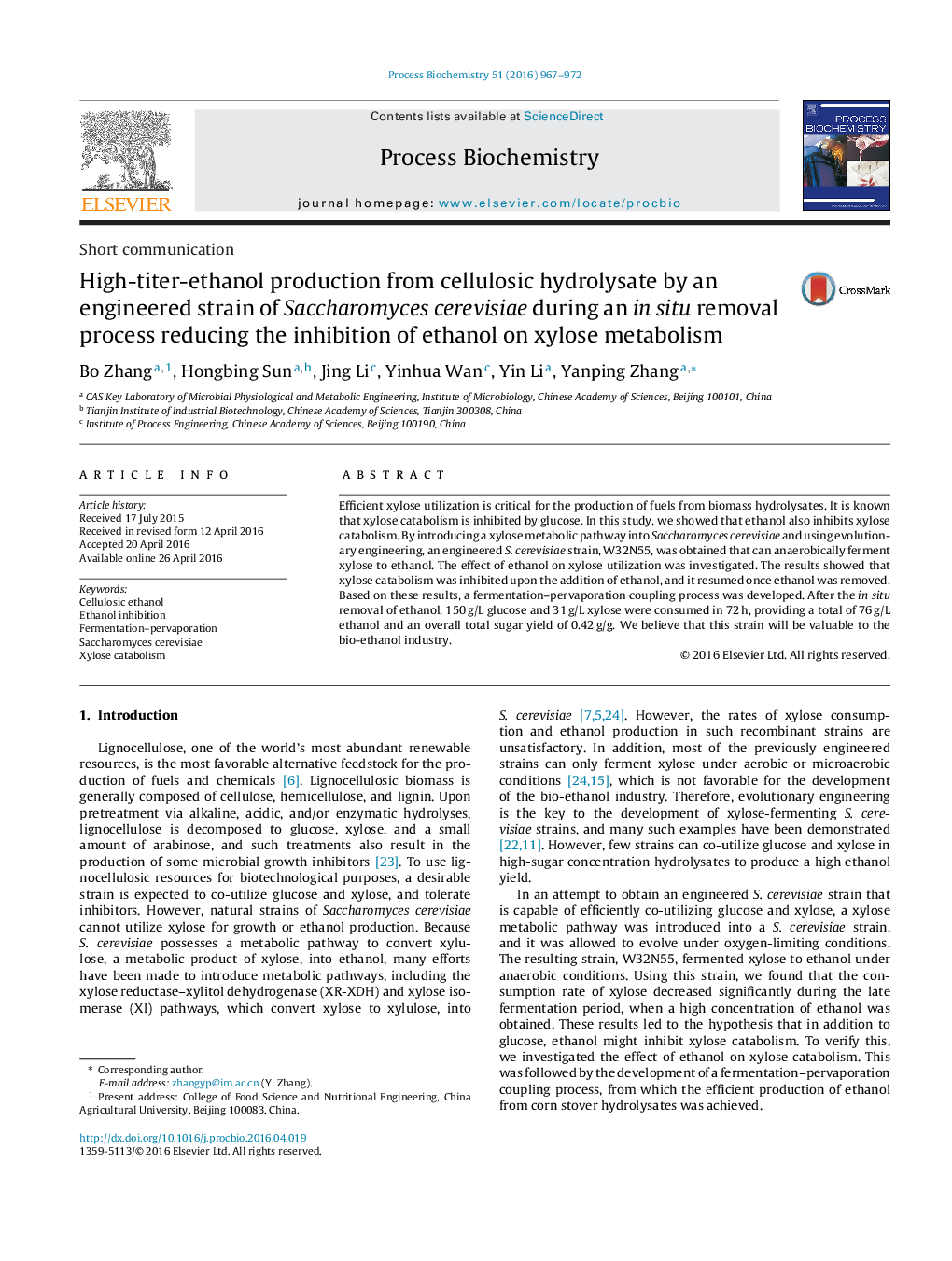| Article ID | Journal | Published Year | Pages | File Type |
|---|---|---|---|---|
| 34142 | Process Biochemistry | 2016 | 6 Pages |
•Xylose catabolism by Saccharomyces cerevisiae was inhibited by ethanol.•Xylose catabolism was resumed once ethanol was removed from the fermentation broth.•A fermentation-pervaporation process was used for in situ removal of ethanol.•High titer of ethanol was produced from corn stover hydrolysate.
Efficient xylose utilization is critical for the production of fuels from biomass hydrolysates. It is known that xylose catabolism is inhibited by glucose. In this study, we showed that ethanol also inhibits xylose catabolism. By introducing a xylose metabolic pathway into Saccharomyces cerevisiae and using evolutionary engineering, an engineered S. cerevisiae strain, W32N55, was obtained that can anaerobically ferment xylose to ethanol. The effect of ethanol on xylose utilization was investigated. The results showed that xylose catabolism was inhibited upon the addition of ethanol, and it resumed once ethanol was removed. Based on these results, a fermentation–pervaporation coupling process was developed. After the in situ removal of ethanol, 150 g/L glucose and 31 g/L xylose were consumed in 72 h, providing a total of 76 g/L ethanol and an overall total sugar yield of 0.42 g/g. We believe that this strain will be valuable to the bio-ethanol industry.
Graphical abstractFigure optionsDownload full-size imageDownload as PowerPoint slide
